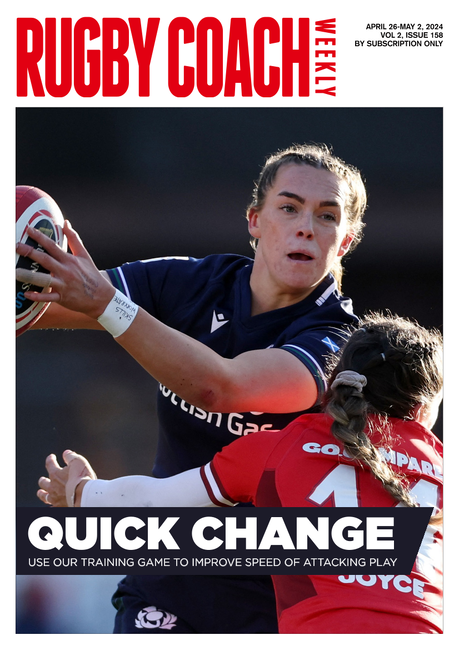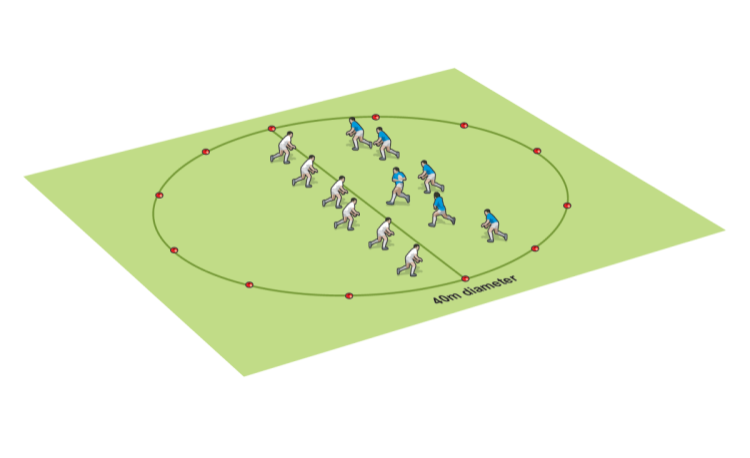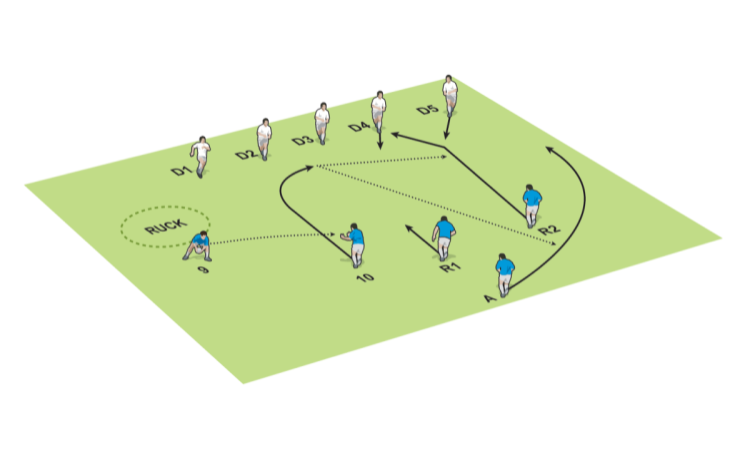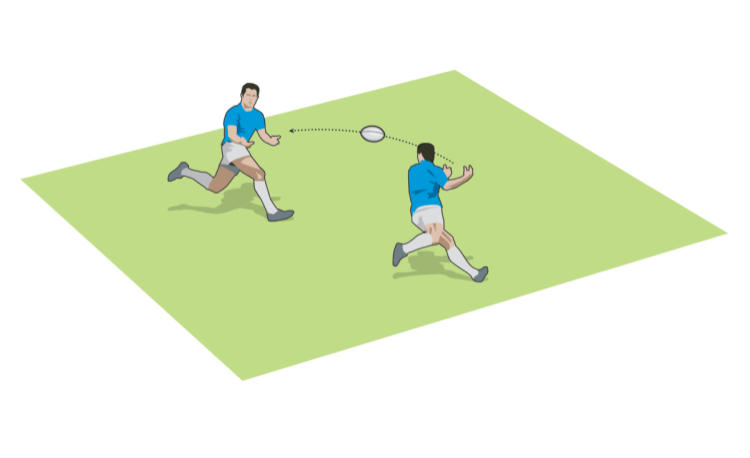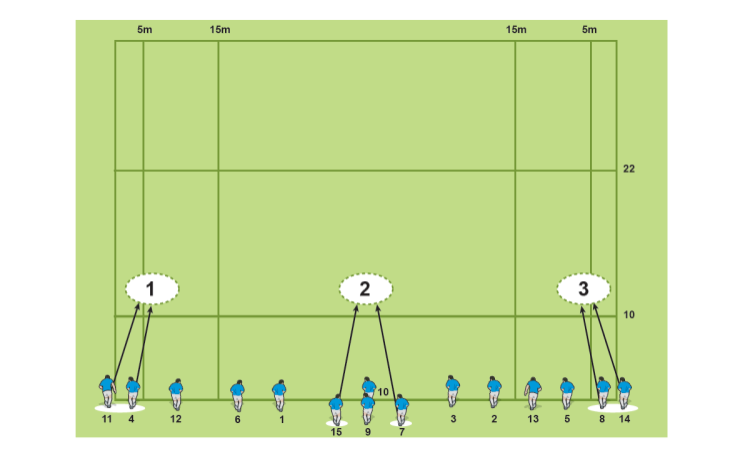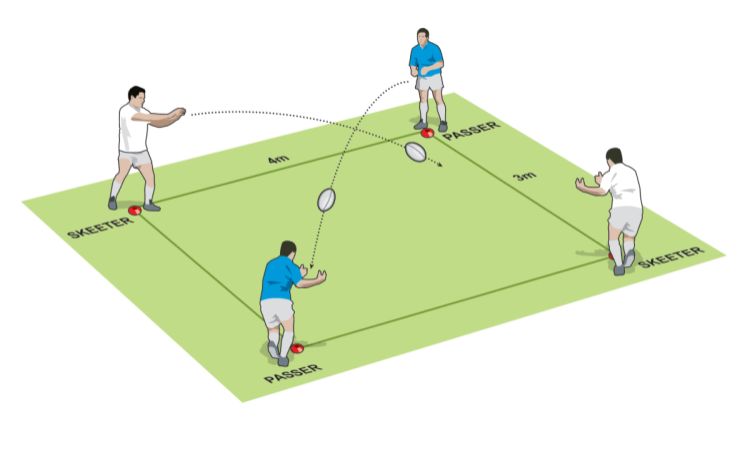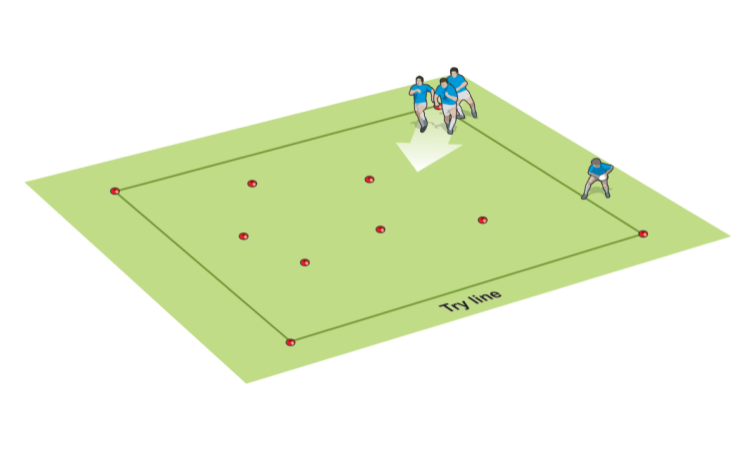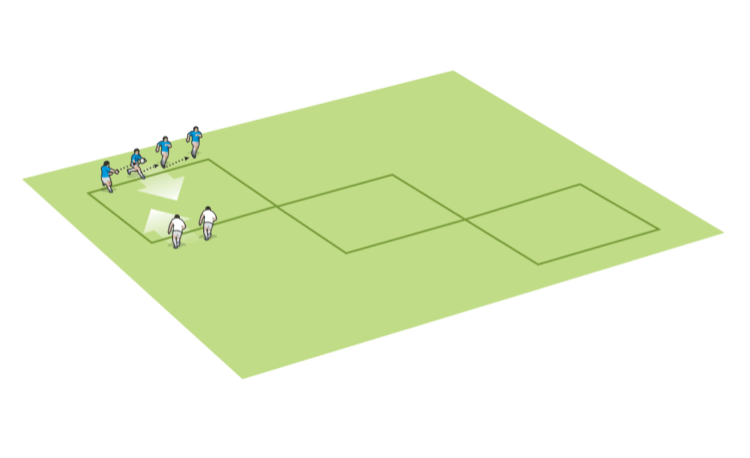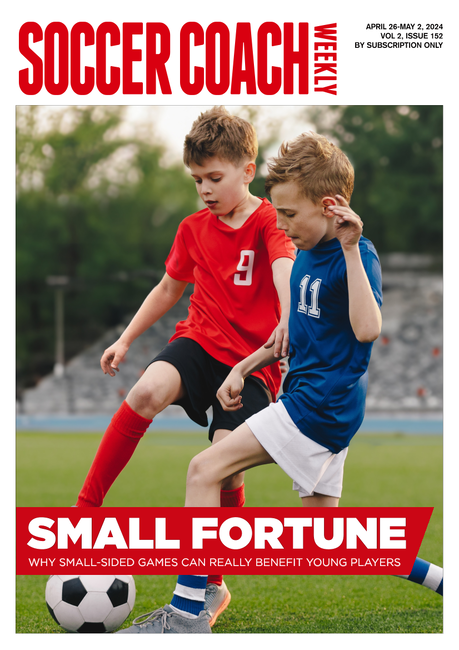You are viewing
1 of your 2 free articles
Rugby drills to help players create pace on the ball
Players often understand the advantages of a skill, such as putting pace on the ball, but are not so certain of how and when to do so. So a one-element drill session is helpful.
It is also means different outcomes for the various types of players. For instance, where are your centres going to put pace on the ball? And what about the props? How are they going to utilise pace on the ball?
Aim of the drill - to create pace on the ball
This skill is all about carrying the ball forward quickly, to exploit gaps in the defence. It therefore forces defenders to turn and chase. The faster the ball moves forward in the hands of the attacker the less time the defence has to react.
Individual techniques (practised in groups)
Rugby drill 1
- To set up this rugby drill, put four cones down, five metres apart in a straight line.
- With a ball, a player walks forwards towards the cones. As he moves over the first cone, he throws the ball up in front of him so he has to catch it over the second cone.
- The player then accelerates to the third cone to run through to the fourth cone.
Develop the drill
- Put the cones into a zig-zag formation so the player has to change direction midway through the run.
- Add a second player who follows and takes a pass from the catch after the fourth cone.
Rugby drill 2
- For this rugby drill, use the same four cones in a straight line, now with a passer about five metres to the side of the third cone.
- The receiver walks towards the first cone and accelerates. As the receiver runs over the second cone, the ball is passed to him over the third cone.
- Depending on the speed of the runner, then push the third cone backwards and forwards.
Game awareness skills
Rugby drills that focus on getting pace on the ball are not just about coaching players to accelerate onto the ball. They are also about attacking gaps. So with pace comes angles. Hence the individual developments.
Game awareness requires players to drift with the pass, to beat a slower defender, or to cut back against the pass, to then cut inside a defender who might have the player’s path covered.
Pace on the ball drill
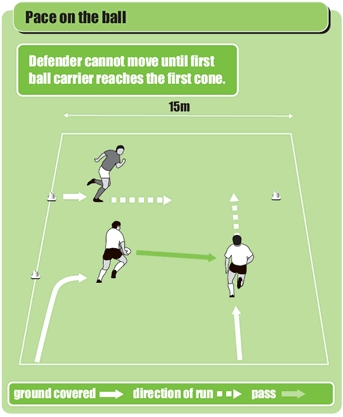
Run the rugby drill
- The passer runs forward and passes once he crosses the first cone. As soon as he crosses this cone, a defender runs across to cover the attacker.
- The defender can only move along the horizontal line.
Click the link to order a copy of Coaching Rugby, a manual with over 100 drills and games to coach all the basics.
Click the link for a rugby drill to get players running on to a pass at pace.
Newsletter Sign Up
Coaches Testimonials

Gerald Kearney, Downtown Las Vegas Soccer Club

Paul Butler, Florida, USA

Rick Shields, Springboro, USA

Tony Green, Pierrefonds Titans, Quebec, Canada
Subscribe Today
Be a more effective, more successful rugby coach
In a recent survey 89% of subscribers said Rugby Coach Weekly makes them more confident, 91% said Rugby Coach Weekly makes them a more effective coach and 93% said Rugby Coach Weekly makes them more inspired.
Get Weekly Inspiration
All the latest techniques and approaches
Rugby Coach Weekly offers proven and easy to use rugby drills, coaching sessions, practice plans, small-sided games, warm-ups, training tips and advice.
We've been at the cutting edge of rugby coaching since we launched in 2005, creating resources for the grassroots youth coach, following best practice from around the world and insights from the professional game.


